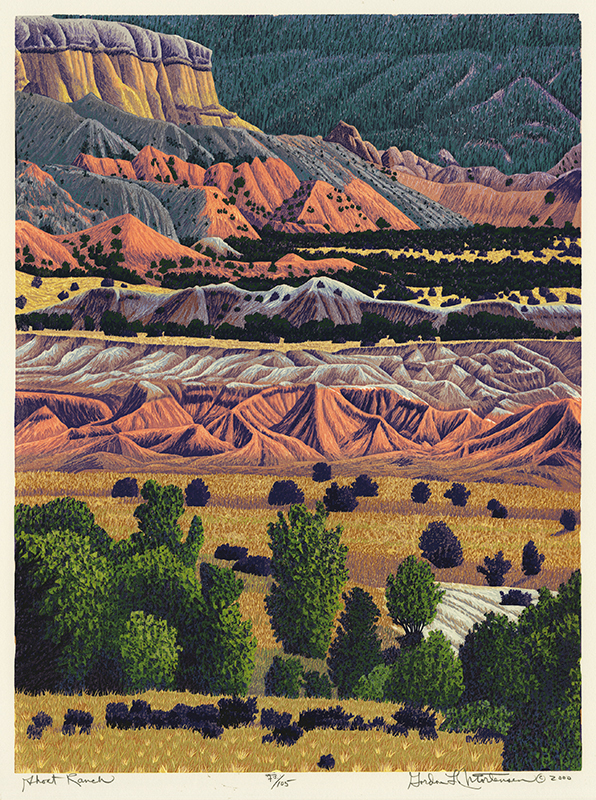
19th, 20th & 21st Century Fine Prints
707-546-7352 · fax 707-546-7924 · web: www.annexgalleries.com · email: artannex@aol.com
Ghost Ranch by Gordon Louis Mortensen

Ghost Ranch
Gordon Louis Mortensen
Ghost Ranch
Gordon Louis Mortensen
1938 - PRESENT (biography)Among the natural landscapes Gordon Mortensen was drawn to, Ghost Ranch and its surrounds in Abiquiu, New Mexico, was one that he returned to frequently, finding in its seasonal turns - and their respective flora - a unique and ever-changing palette. Ghost Ranch is a 21,000-acre retreat located near Abiquiu in North-central New Mexico, 50 miles north of Santa Fe, and was the home and studio of artist Georgia O'Keefe, who commented about Ghost Ranch, “It is not a country of light on things, it is a country of things in light.”
In this composition, Mortensen captures the amazing range of textures and colors of the New Mexican landscape, intensified by the afternoon sun. Fed by seasonal monsoons, the flora on the desert floor softens the harsh landscape, stretching between the dramatic, layered geological make-up of surrounding mesas, their hues as varied as a sunset. Still more color is found in the strips of deep green trees cutting through the foreground, middle, and background of the image. The composition is peaceful, warm, and inviting.
To create the subtle gradations of color in this image, Mortensen used a single block and forty-two different colors with twenty-five press runs.
Gordon Mortensen commented on the process he uses:
"Only one woodblock is used. On it, an image is drawn in India ink. Before the first color is printed, any areas that are to remain unprinted (white or the color of the paper) are cut away from the surface of the block. Then an oil-base ink is used to print the first color on all of the sheets of paper that are to be used for the edition and proofs.
After the first printing, the block is again cut, removing any surface of the block that is to remain the first color in the finished print. After each subsequent color is printed, the block is cut, the process continues until the print is finished and most of the surface of the block is cut away."
